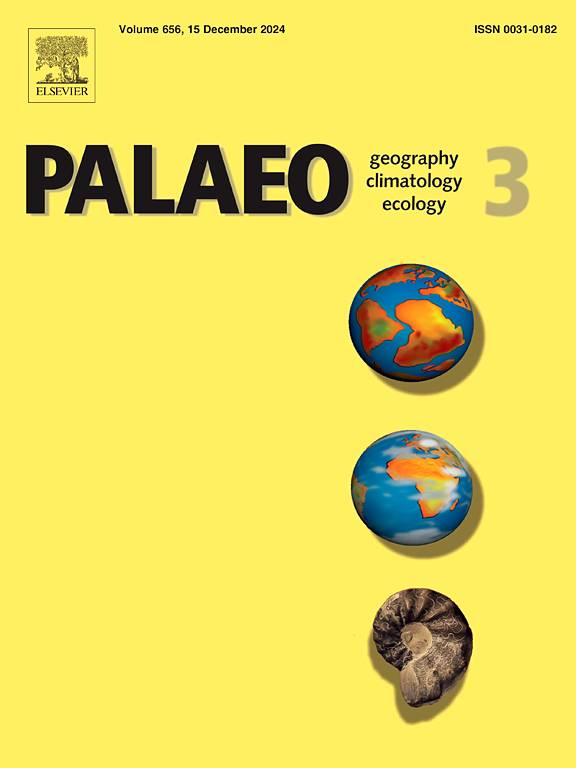最早的三叠纪微生物丘显示了二叠纪末灭绝后生命恢复的“绿洲”
IF 2.7
2区 地球科学
Q2 GEOGRAPHY, PHYSICAL
Palaeogeography, Palaeoclimatology, Palaeoecology
Pub Date : 2025-08-20
DOI:10.1016/j.palaeo.2025.113216
引用次数: 0
摘要
由于二叠纪末大灭绝(EPME)后浅海环境的压力,早三叠纪演替中后生动物组合很少。关于海洋生物是迅速恢复,还是被推迟了6-7亿年,存在着激烈的争论。在这里,我们提出了一个新的海底组合,显示了在EPME危机后不到1 Myr的Griesbachian中部存在相对多样化动物的证据。这些化石是在中国西南长江上游地区重庆的微生物丘中发现的,主要由钙化丝状蓝藻组成,包括Cyanonema、Rivulariaceae和Girvanellaceae,以及浮游钙化微生物(calicispheres)。微生物丘的动物包括相对常见的微贝壳类、海绵类、腹足类和双壳类,以及较少的棘皮类和腕足类。这些后生动物群落在不同亚相的微生物丘沉积中存在差异,表明在微生物丘生长阶段生态系统结构存在差异。这种微生物丘可能不仅是大灭绝的典型后果,而且在早三叠纪海洋的不适宜居住的环境中,它还充当了动物的“绿洲”。本文章由计算机程序翻译,如有差异,请以英文原文为准。
Earliest Triassic microbial mounds indicate an ‘oasis’ for recovery of life following the end-Permian extinction
Metazoan assemblages are rare in Early Triassic successions because of stressful environments in shallow seas after the end-Permian mass extinction (EPME). There is active debate about whether life in the oceans recovered rapidly or was delayed by up to 6–7 Myr. Here we present a new seabed assemblage showing evidence for relatively diverse animals in the middle Griesbachian, less than 1 Myr after the EPME crisis. The fossils are in microbial mounds from Chongqing, in the Upper Yangtze region, SW China, primarily composed of calcified filamentous cyanobacteria, including Cyanonema, Rivulariaceae, and Girvanellaceae, as well as planktonic calcareous microorganisms (calicispheres). The animals of the microbial mound include relatively common microconchids, sponges, gastropods and bivalves, and less abundant echinoderms and brachiopods. These metazoan communities differ among sub-facies of the microbial mound deposits, implying diverse ecosystem structures during the growth phase of the mounds. This kind of microbial mound might not only be typical of the aftermath of the mass extinction, but also have served as an ‘oasis’ for animals in the otherwise inhospitable environments of the Early Triassic seas.
求助全文
通过发布文献求助,成功后即可免费获取论文全文。
去求助
来源期刊
CiteScore
5.90
自引率
10.00%
发文量
398
审稿时长
3.8 months
期刊介绍:
Palaeogeography, Palaeoclimatology, Palaeoecology is an international medium for the publication of high quality and multidisciplinary, original studies and comprehensive reviews in the field of palaeo-environmental geology. The journal aims at bringing together data with global implications from research in the many different disciplines involved in palaeo-environmental investigations.
By cutting across the boundaries of established sciences, it provides an interdisciplinary forum where issues of general interest can be discussed.

 求助内容:
求助内容: 应助结果提醒方式:
应助结果提醒方式:


